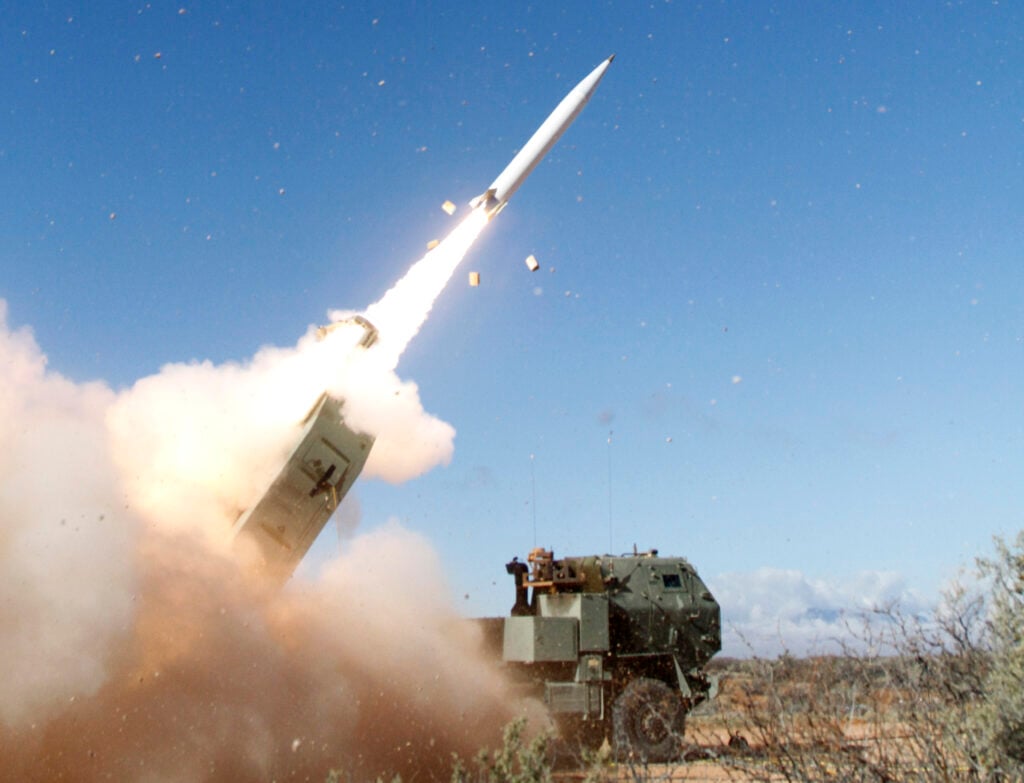
Lockheed’s prototype Precision Strike Missile (PrSM) fires from an Army HIMARS launcher truck
WASHINGTON: The Army hasn’t yet figured out which countries would actually host the new long-range missiles it’s developing, an Army strategist acknowledged today. Experts point out that just hosting US weapons with the potential to threaten China may be a risky move for any nation in the region.
While not an immediate crisis for the service, since prototype missiles don’t enter service until 2023, it’s still a distinct problem for the Army’s new strategy of operating as an “inside force,” one able to deter China from forward positions in the so-called First Island Chain. That line runs from Southeast Asia through the Philippines to Japan and Korea.
The closest US territory to China is in the Second Island Chain, specifically Guam, Saipan, and the other Mariana Islands — almost 2,000 miles from the Chinese mainland. While exact ranges are highly classified, of the multiple long-range missiles the Army is exploring, it’s probable that only the Long-Range Hypersonic Weapon (LRHW) could hit China from Guam.
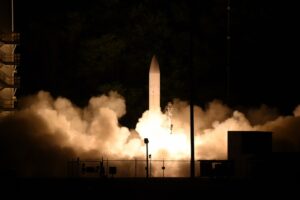
Launch of Army-Navy Common-Hypersonic Glide Body (C-HGB) in Hawaii on March 19, 2020.
For any missile less long-ranged (and less expensive), the Army would need to persuade a friendly nation to accept American launchers on their soil, at least as part of a temporary “rotational” presence. While the service is drawing up plans and discussing its new Pacific strategy with allies and partners, at least in general terms, any specific agreement on hosting missiles is a long way off – if it ever comes.
“In terms of the Indo-Pacific, where we would posture these capabilities…is about working with allies and partners,” said Col. Jason Charland, a senior strategist in the Army’s Pentagon headquarters. “We have objectives based on the range of our capabilities, [and] we’ve got a plan that we’re looking at right now –a calibrated force posture plan in the Indo-Pacific.” (Emphasis ours).
“Ideally, what we’re looking at is a rotational presence,” he noted, where units come and go from time to time, rather than permanent bases: “We’re not talking about permanent presence necessarily.”
But, he acknowledged, “It may be that none of our allies and partners in the Pacific want long-range fires [on their soil]. Then we’d have to look at how we mitigate that.”
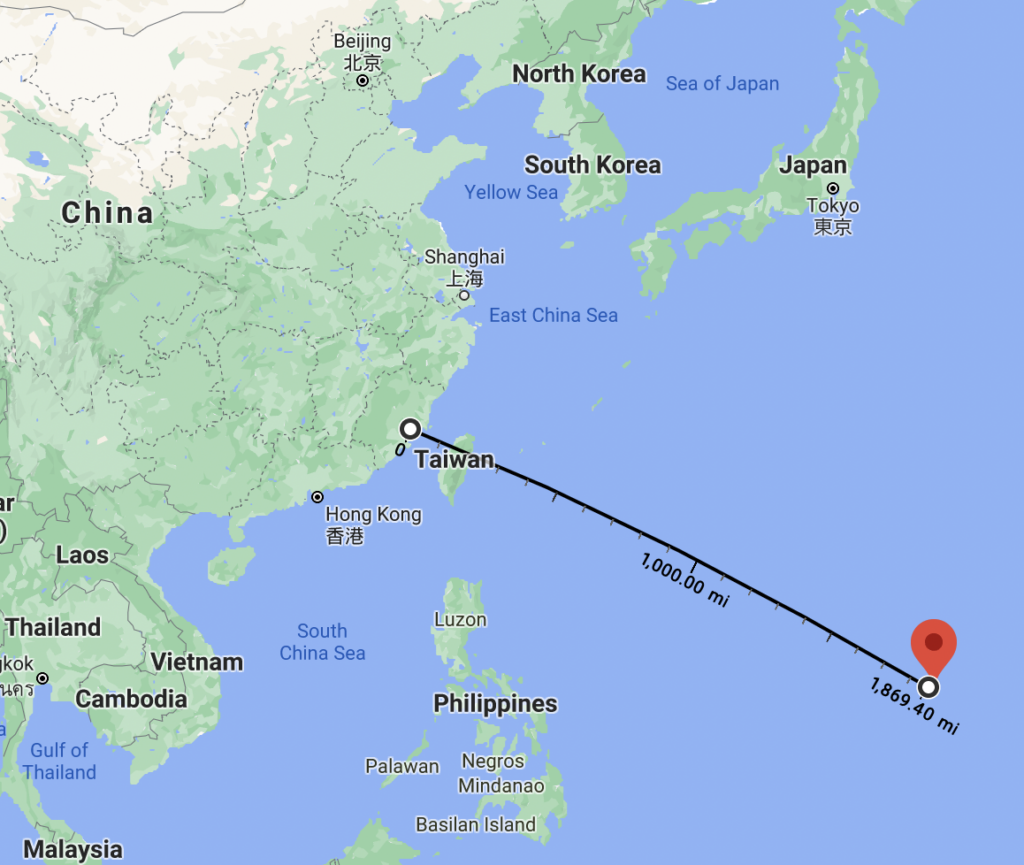
The closest US territory to China, the Marianas, is almost 2,000 miles away. (Google Maps)
Expert Skeptics Speak
Will any Pacific nation be willing to bell the Chinese cat so brazenly as to have US missiles on their soil, pointed at Chinese targets?

Lt. Gen. (ret.) Thomas Spoehr
“Sydney, that is the $64,000 question,” said Thomas Spoehr, a retired three-star Army general now with the Heritage Foundation. “Today, there is probably not one of our regional partners in the first island chain that would be willing to base Army — or any other service) — long range strike missiles in their country.”
“It was a big deal to have South Korea host THAAD and that was a purely defensive system,” Spoehr told me: While the South Korean government agreed it needed THAAD to defend against Northern missiles, China objected strenuously because THAAD’s radar could potentially detect aircraft in Chinese airspace – although THAAD couldn’t actually shoot anything down that far away.
“So, for the time being the Army will need to rely on Guam and potentially Palau or Australia for a location to base long range missiles, and then deploy closer when geopolitical conditions deteriorate,” Spoehr said. “It would then take something really significant for a country like the Philippines to allow the US to bring missiles forward, like a real brush-up in the South China Sea with ships sunk, and probably only if the Philippines had a different political administration.” (The current Duterte regime has oscillated back and forth between embracing Beijing and denouncing it).
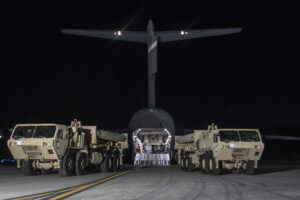
US Army THAAD missile defense vehicles arrive at Osan Air Base in South Korea in 2017.
“To suggest we could base them in South Korea is to ignore the massive controversy the Chinese have created over THAAD, and that’s a missile defense system,” agreed Dean Cheng, a senior research fellow at Heritage’s Asia Center. “With the Philippines, we’re constantly having discussions about whether we’re going to be allowed to deploy aircraft,” he said, let alone offensive long-range missiles.
“What should be clear with what’s going on with President Moon [of Korea] and President Duterte [of the Philippines] is our allies are not simply our sock puppets,” Cheng said bluntly. “They have their own strategic vision, they have their own strategic interests; sometimes they align with ours, but they don’t always.”
Now, if China moved forcefully against the Philippines – sending troops to kick the Philippine garrison off the Second Thomas Shoal, for instance – then that might change things, Cheng acknowledged. But a future government in Manila could go either way under such pressure: either beg the US for military help or knuckle under and cut a deal with China. After all, there are many Filipinos who see the US as the historic threat to their sovereignty: “There’s an element pf Philippine politics that doesn’t want to be an American colony again,” Cheng said, “and that’s how they perceive an American military presence.”

Dean Cheng
So, he said, “where would you base missiles west of Guam? Japan is the most likely, because Japan and the US do see China in roughly the same way….as a major threat.
“There might be some willingness to rotational deployments in places like Japan,” Cheng emphasized. “But in event of crisis, would Japan be willing to risk escalation?” After all, Beijing would see US missiles pointed at Chinese territory as provocative.
Cheng dismissed other nations as possible hosts. Thailand is a treaty ally but currently under US sanctions after a coup; it’s always been careful to steer a course between great powers anyway, dating back to the days of French and British colonialism. Vietnam has fought China on and off for centuries, as recently as 1979, but its rapprochement with the US probably doesn’t extend to hosting American ground troops on soil still scarred by what its people call “the American War.” Taiwan might be willing to host any US forces it can get, but that would in itself spark a major crisis with China.
Even if a country agrees to host the missiles, Cheng added, it might not give them free reign to operate in a conflict it wasn’t directly involved in. “What if the country says, ‘we’re not part of this dispute… you’re not allowed to move your missiles off base,’” he said. “Now you just have this fat juicy target.”
“You’d have to have the region really view China as on the march and posing a direct threat to them,” he said, before you’d get widespread acceptance of US missiles.
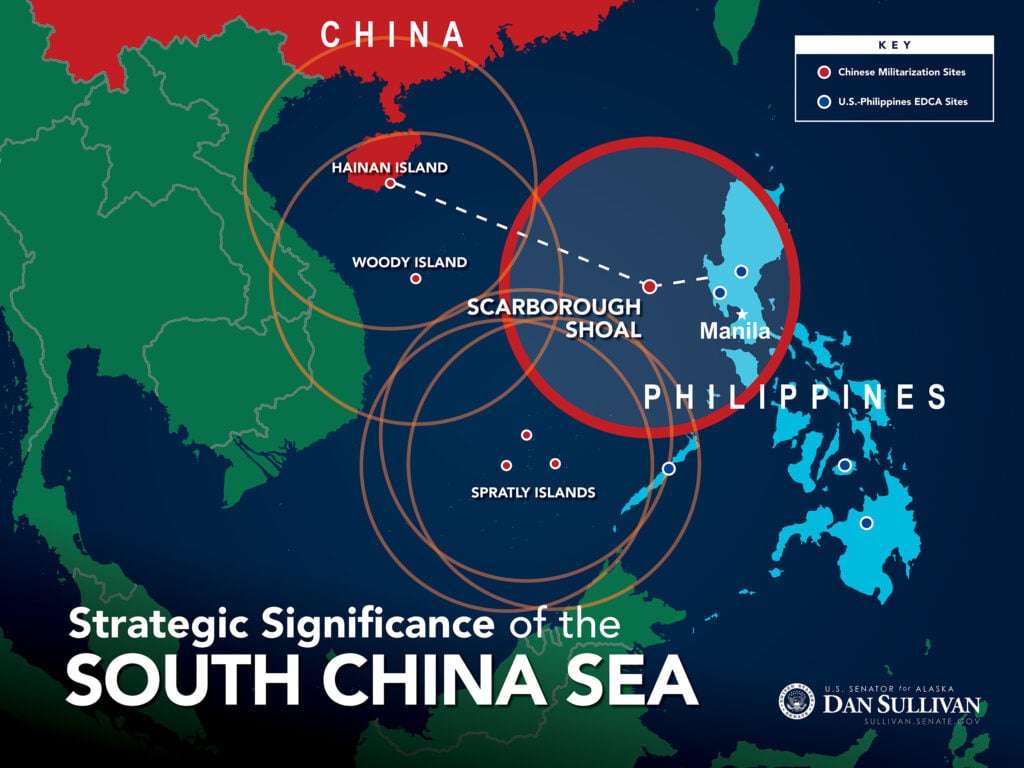
Graphic courtesy Sen. Dan Sullivan
‘Winter Is Coming’
But countries might change their minds as China becomes ever more self-confident and aggressive, argued Thomas Karako, director of the missile defense project at CSIS. “As the geopolitics worsen, I think the alliance and basing issues are going to change over time as well,” he told me. “They’re going to be pushed more towards hosting than against.”

Tom Karako
So you don’t wait to build the missiles until you have an agreement with potential host nations, he said: You build them first so you have the options if the international situation gets worse. It’s a lot faster to negotiate a Status Of Forces Agreement (SOFA) and deploy a battery of missile launchers than it is to develop and build the missiles in the first place.
“The ability to arrange a diplomatic agreement in a crisis can be accelerated in a crisis, but the timelines for material development can be more unforgiving,” Karako said. “Just because we haven’t yet signed and ratified basing or status of forces agreements, and just because we haven’t begun to pour concrete, does not mean that we should not be doing the R&D and metal bending for strike assets that will, after all, be mobile or relocatable.”
As Karako points out, the Army’s not envisioning fixed missile bases set in concrete, but wheeled launch vehicles capable of on-road or – in the case of HIMARS and MLRS launchers – off-road movement. They can be deployed by cargo aircraft like the Air Force C-17 and relocated from one hiding spot to another, with spare rounds, fuel, and other supplies dispersed in concealed caches. That’s the Army’s emerging strategy for avoiding death by precision-guided missile.
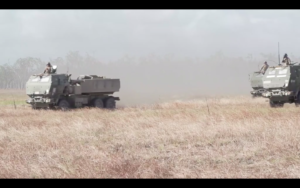
US truck-mounted HIMARS missile launchers on the move in Australia during Talisman Sabre 2019
“The Army is thus exactly right to be focused not just on mobility, but also the flexibility to move around on short notice,” Karako told me. “”Besides needing to have the flexibility to relocate wherever needed, we also do not need to be telegraphing to our potential adversaries where exactly our launchers might be in a crisis. Let them wonder. We don’t need to make the jobs easier for Chinese targeteers.”
“You reveal to deter, and conceal to win,” he said. “It is enough to reveal the broad outlines of our missile strike capabilities, while still concealing other features, such as probable basing locations.”
“Are we serious that China is the central challenge?” Karako asked. “If so, we need to act like it, and make hay while the sun is shining. That means developing and building these missile strike capabilities with all deliberate haste, fielding and training with them at Guam and other US islands, and begin joint and combined exercises for the sort of rapid dispersal and island hopping one might need in a crisis.”
“Winter is coming,” Karako warned. “So build the missiles.”
Navy jet trainer fleet operations remain paused after engine mishap
One week after the incident, a Navy spokesperson says the service is continuing to assess the fleet’s ability to safely resume flight.


























